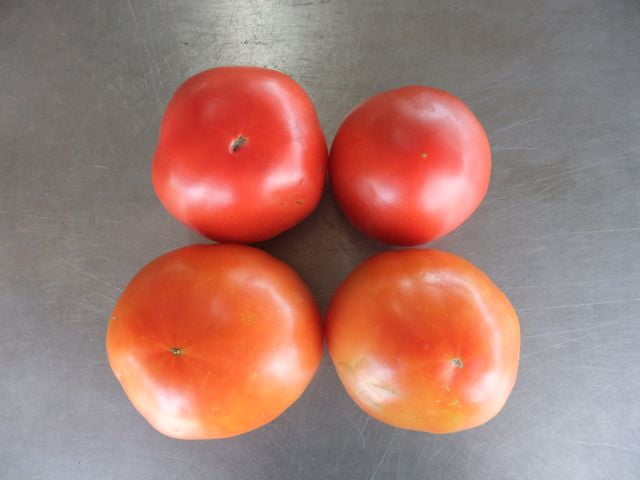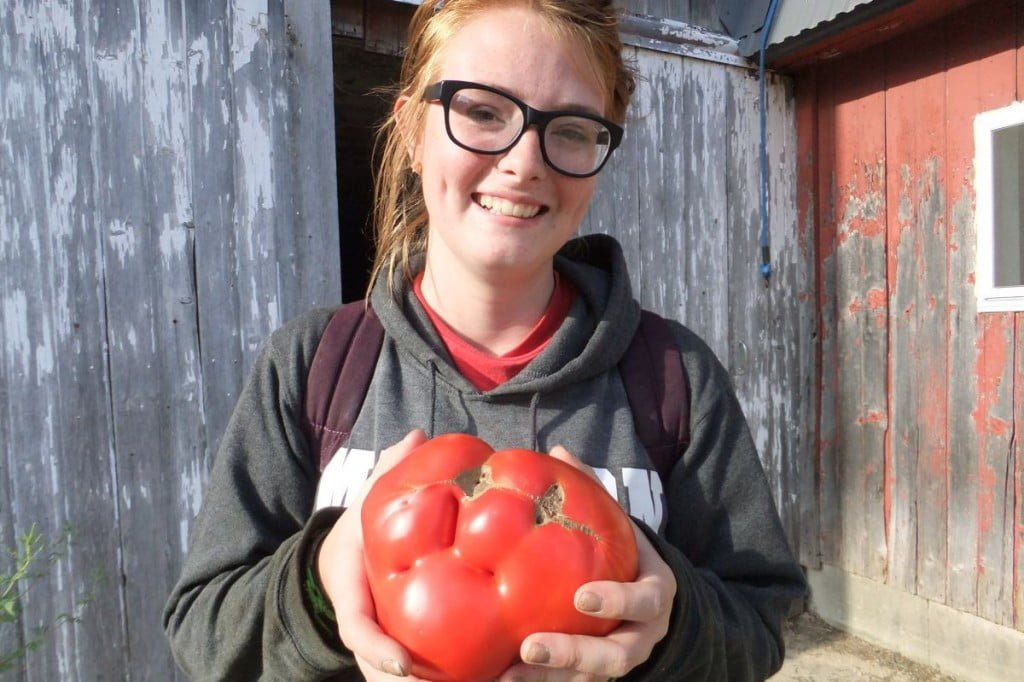Our thoughts on a recent New York Times op-ed piece
- On: August 13, 2014
 0
0
Last night, our dinner conversation centered on an opinion piece in the New York Times titled “Don’t Let Your Children Grow Up To Be Farmers.” Author/farmer Bren Smith claims “The dirty secret of the food movement is that the much-celebrated small-scale farmer isn’t making a living.” It’s not true! We don’t claim that farming is easy but our farm (and others in Wisconsin) are proof that you can support a family on a small farm. Like many professions, the pay is low while you learn your skills. We lived frugally while starting and expanding our farm. We plowed our earnings back into the business for years but now we earn a middle-class income, like many of our customers.
What would we tell Bren Smith if we could talk to him?
– Don’t give up. There’s a long learning curve if you did not grow up farming. It will take time to accumulate the intuition, skills and tools that you need to be successful. Your land may need time and investment to develop too.
– Work on other farms. You will learn so much while earning a wage.
– Extend your season. It’s difficult to make a year’s income during a short growing season. Extend your work (and income) to a longer season with hoophouses or stored crops. Selling stored root crops through the winter is an important part of our farm’s stability.
– Understand that your income will fluctuate from year to year. Save during the good years.
– Farming (like every new business) requires investment. Your friends with salaried jobs do not have to invest financially in their work, but you do. That’s how it is. Be smart/cautious/frugal in your investments, including education.
– Start a food co-op. Co-ops become the hub for customers interested in local, good quality food.
– Band together with other farms in your area. Smith is correct when he writes that we need to “start our own organizations — as in generations past — and shape a vision of a new food economy that ensures that growing good food also means making a good living.” Our farmer coalition FairShare is an excellent example, in its efforts to foster the CSA marketplace in Wisconsin.
We think farming works in this region because of the consumers. That’s you, Tipi members. People in this area are willing to seek out, pay for, and eat food from small local farms. Each of those steps is a hurdle for the average customer. Whether through CSAs, farmers markets or local stores, people in this area support local farms and are rewarded with fresh, great-tasting food. Thank you all.
Beth & Steve
Sign up soon for Bike the Barns.
Bike the Barns will be held Sunday September 14. Learn more and register here. Hosted by FairShare farms, the annual ride is the primary fundraiser for our Partner Shares program. This year’s ride heads northeast from Madison, for either 45 or 60 miles. Don’t wait if you plan to join the ride. Registrations often fill by late August.
Upcoming sales of extra produce
We hope to have extra basil and extra slicing tomatoes to sell during the next month. Watch for emails from me. It will be a few more weeks before we have plum tomatoes to sell.
When should you refrigerate tomatoes?

Ripe tomatoes (top) and less-ripe tomatoes (bottom).
As usual, we have packed a mix of ripe and less-ripe tomatoes so you can stretch them through the week. The top two tomatoes in the photo are ready to eat. The bottom tomatoes need to ripen at room temperature for a few days. Put on your counter or keep in a brown paper bag.
Tomatoes retain their best flavor and texture when stored at room temperature, no lower than 55oF. However, you should refrigerate your tomatoes if they are fully ripe and you don’t expect to eat them right away. It is better to sacrifice a little flavor and texture than lose your tomatoes to rot. Also, fully-ripe tomatoes are less sensitive to chilling injury.

Farmhand Caitlyn holds today’s most celebrated tomato. It’s the largest tomato we picked and it looks just like an “old grandmother’s face.”
#2 Grade Red Bell Peppers
I write about pepper grading every year. Returning members can say “yeah, yeah” and skip ahead. New members, please read.
Many of the red bell peppers we send in the CSA boxes will be our #2 grade. We do this to avoid waste and to deliver good value to our CSA members. The #2 grade peppers are excellent eating quality, but are not quite pretty enough to sell to stores. As a result, we place a much lower value on these peppers. This allows us to provide generous amounts of red bell peppers over the course of the season, about three times the amount we could provide if we only gave #1 grade. We feel this is a good exchange, even if it means you occasionally open a pepper and find that it needs trimming. Here are the reasons that peppers are downgraded from #1 grade to #2 grade:
1. They may have a minor blemish, or
2. They may have minor insect damage, or
3. They may be very ripe and beginning to wrinkle. (These are especially sweet and delicious as they are fully ripe. These cannot be sold to stores because their shelf life is short. The texture is less crisp than a #1 grade pepper, but the flavor more than makes up for it.)
4. They might be partially red and partially green.
5. Others are just too small.
The eating quality is fine (or excellent) for all these #2 peppers. We throw away all peppers that we suspect have rot inside (although one may occasionally slip through in either #1 or #2 grade.) Today’s peppers are #2 grade.
Veggie list and veggie notes
Be prepared, this box is very full and very heavy. We will send everything on this list, as long as we can fit it in the box.
Sweet corn, about 10 ears
Yellow watermelon OR orange watermelon OR muskmelon
Red slicing tomatoes, 5 lb, mixed ripeness
Bell peppers (red, yellow, or orange), 1 or 2
Romano beans, 1 lb
Carrots, 2 lb
Cucumbers (1 or 2) OR pickles
Walla Walla onion, 1 or 2
Flat parsley, 1 bunch
Next week’s box will probably contain melon, tomatoes, peppers, cilantro and more summer goodness.
Sweet corn – This is a new variety, picked at its peak. It’s more creamy and less sugary than the variety we sent last week. Steve says this variety achieves the ‘old-fashioned’ flavor of the varieties he grew years ago.
Melons – Everyone will get a muskmelon (netted skin, orange flesh) or a yellow watermelon (sweet, yellow interior) or an orange watermelon (pale orange interior, sweet, tender).




